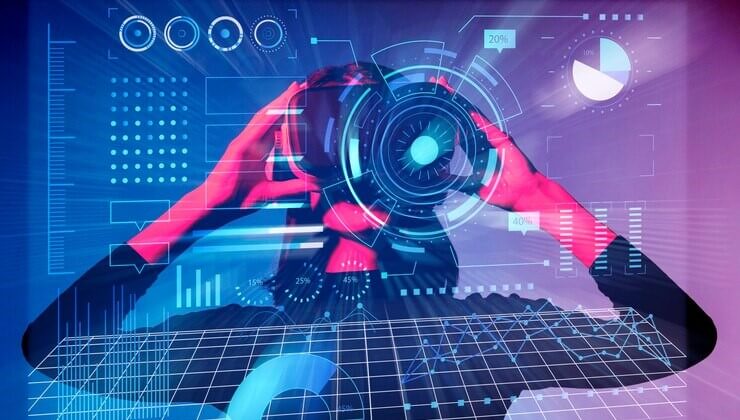The Essentials of Graphics in the Age of AI

Humans’ relationship with artificial intelligence (AI) has influenced many domains. Graphics, a domain of creativity and precision, has seen a profound transformation owing to the age of AI.
In this exploration of the essentials of graphics, we go into the interaction between humans and artificial intelligence, unraveling the complex collaboration that defines visual expression in this digital era.
The Visual Imagination
At the core of graphic construction, the capability of humans exists which entails imagination and conceptualization. From making a persuasive advertisement to designing a user-friendly interface, the essence of graphics stems from human creativity.
AI, while powerful in its analytical skill, cannot replicate the innate capacity of the human mind to envision, dream, and innovate.

The Human Emotion
Graphics is a channel for conveying emotion and inducing a response. It is in the subtle brushstrokes, the color palette chosen, and the composition of elements that the soul of graphics is revealed. No algorithm can infuse a design with the raw, unfiltered emotion that a human pours into their work. The emotional resonance of a graphic piece transcends the binary capabilities of AI, creating a connection between the creator and the audience.
Creativity, Technology & Marketing
While AI is exempted from human creativity, it is a vital means to polish the artistic method. Algorithms existent in machine learning analyze massive datasets, providing an understanding of design trends and user preferences. Also, AI trends in digital marketing such as sentiment analysis and customer data are relevant since they guide graphic designers to specify their clients’ needs.
This symbiosis between human intuition and AI-driven analytics allows graphic designers to make sound decisions, enhancing the effectiveness of their visual communication.
The Precision
In the age of AI, precision is crucial. Advanced algorithms enable unparalleled precision in graphic design Yet, it is the sharp eye of a human designer that ensures the alignment of precision with purpose. AI may generate pixel-perfect visuals, but it takes a human touch to give those pixels context and relevance.
The Challenge of Authenticity
As AI becomes more integrated into the graphic design process, the challenge of maintaining authenticity becomes increasingly pertinent. Authenticity is not a line of code but a quality rooted in the unique perspective and voice of the creator. A human touch ensures that a graphic piece reflects the values, identity, and individuality of its originator, contributing to a diverse and rich visual landscape.
The Unseen Narrative
Graphics often tell a story, weaving a narrative that resonates with the audience. Beyond the visible elements, there occurs an unseen narrative – the thought process, the inspiration, and the personal experiences that shape a design. AI, devoid of personal experiences, cannot infuse a graphic with the authentic narrative that comes from the depths of a human creator’s perspective.
The Evolving Collaboration
The age of AI is marked by the evolution of collaboration between humans and machines. Graphic designers no longer work in isolation but engage in a dynamic partnership with AI tools. This collaboration, however, is a dance where humans lead, bringing their creativity to the forefront, and AI simply follows, offering support and building up efficiency. The true magic lies in the harmony of this partnership.
Graphic designers believe that AI plays the role of a companion in their projects. It is safe for them to say that AI leveraging the strength of AI like generative design, data analysis, and pattern recognition contributes to their tasks.
Generative design relates to the use of AI to design logos, data analysis is associated with the personalization of graphic design, and pattern recognition helps with the overall layout.
The Future Canvas
In contemplating the essentials of graphics in the age of AI, it becomes evident that although technology can augment and streamline the design process, the soul of visual expression resides in the realm of human creativity. The canvas of the future is one where humans and AI collaborate synergistically, each contributing their unique strengths to create a visual tapestry that captivates, inspires, and transcends the boundaries of imagination.
Conclusion
As we celebrate the merging of art and technology, it is important to recognize the irreplaceable role of the human touch in graphic design. Certainly, AI is a formidable ally, but it is the essence of human creativity that breathes life into pixels, turning them into powerful conduits of emotion, narrative, and authenticity.
The imagination of humans supersedes AI-driven compositions, applying emotive aspects to graphic design. In addition, the combined efforts of precision and collaboration assist graphic designers in increasing their prospects as excellent artists.
The future is bright for both humans and artificial intelligence. The essentials of graphics in the age of AI are not just about pixels and algorithms but about the enduring spirit of human expression that continues to shape visuals.
